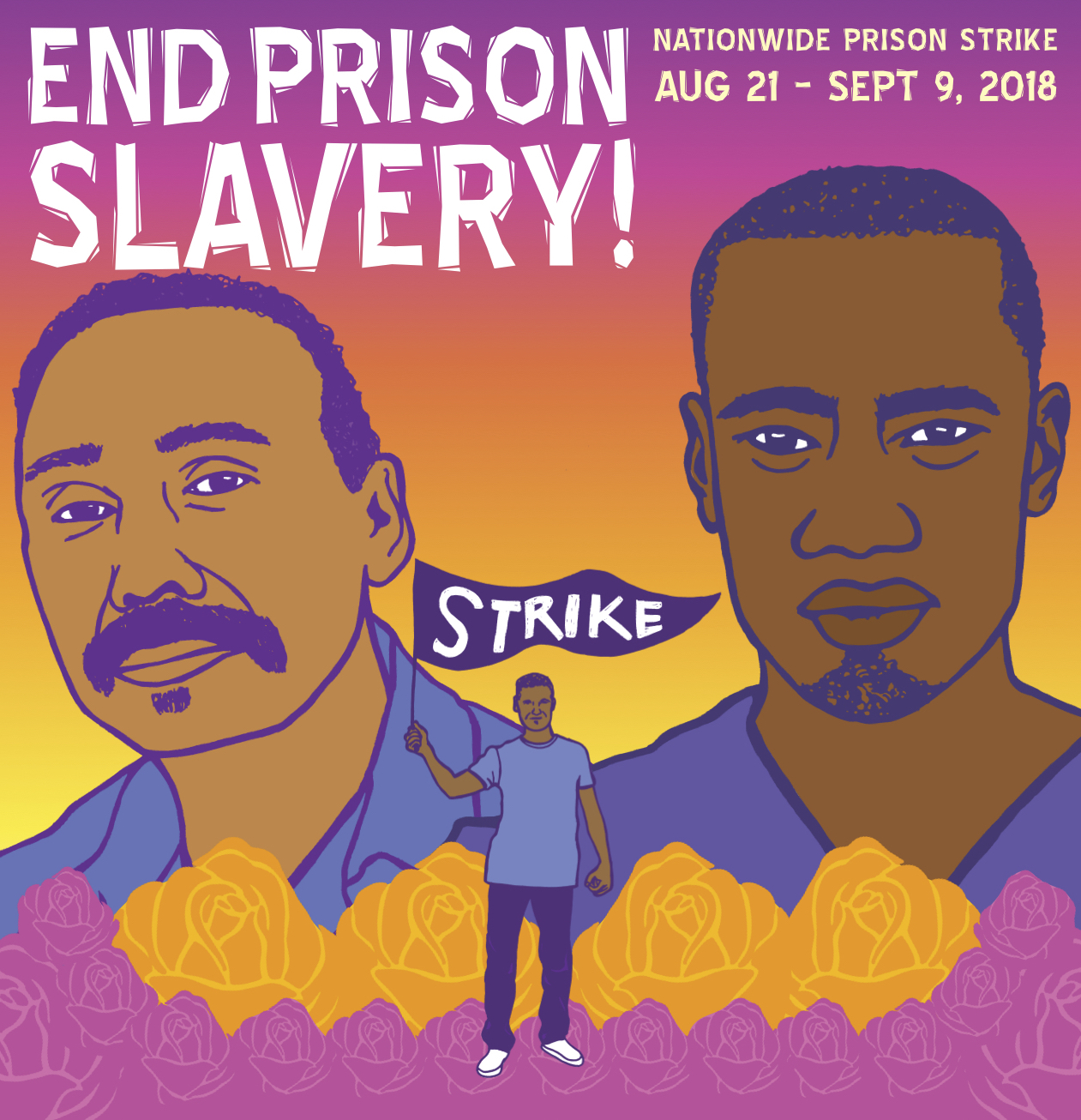

Share
On Tuesday, August 21st, the largest incarcerated population in the world began nineteen days of protests. Primarily organized by prisoners themselves, the August 21st to the September 9th prison strike has the potential to be the largest in US history.
Organizers report that actions have occurred in prisons in: Halifax, Nova Scotia; North Carolina; South Carolina; Georgia, Florida Northwest Detention Center in Tacoma, Washington; and Folsom Prison in California.
Outside solidarity actions have occured in at least 21 cities around the US and as far abroad as Leipzig, Germany. Palestinian political prisoners gave a statement of solidarity from their prisons in occupied Palestine.
Family members have suggested that cell phone lines are possibly being jammed at various prisons in South Carolina. New Mexico had a statewide lockdown Tuesday.
Demands from striking prisoners include restoration of access to Pell Grants rescinded under the Clinton administration, sentencing reform and voting rights. The guiding demands are related to the paltry wages earned by prison laborers.
The last national prison strike was in late 2016 and was in part a response to the 25th anniversary of the Attica Prison uprising. The 2016 coordinated prison strike emerged nationally through the Free Alabama Movement and the Incarcerated Workers Organizing Committee.
The 2016 strike originated in Alabama and Texas with reports suggesting that the strikes expanded nationally. Newspapers reported that lockdowns swept through prisons across the country, and included limitations on access to content such as the San Francisco Bay View National Black Newspaper, a periodical focusing on the inmate perspective.
In Minnesota, Department of Corrections (DOC) officials said that the 2016 action had no impact. In an interview with DOC Deputy Commissioner Ron Solheid and District Supervisor Terry Byrne, Solheid argued that,
We have heard of it. We have not had any impact here. I think it’s unfortunate in that I think a lot of folks feel that the prison labor is slave labor or what have you. Frankly, all of these programs, work release, ICWC, all the work crews, it’s voluntary – you aren’t compelled, you don’t have to participate if you don’t want to. I think most of the folks that do participate in it get a lot out of it. I also think even with the MINNCOR jobs, our prison industries, they get a lot of good skills.
Reports have yet to emerge from Minnesota, details are hard to come by. However, Minnesota does have a history of prisoners striking.
Most famously a MINNCOR worker strike erupted in March 1996. Reports identified over 150 striking workers protesting lowering wages and demanding higher wages.

As we reported on earlier this year regarding prison labor in Minnesota, MINNCOR laborers and DOC work crews earn on average less than $1 an hour. Pay ranges from 25 cents to $2 an hour. The highest paying positions are assigned under strict circumstances, out of reach for the vast majority of inmates. According to DOC Directive 204.010, “No more than 20 percent of the offenders may advance through step six (pre-advanced) and no more than 10 percent of the offenders may advance through step eight (advanced).” Increasing wages are not a possibility according to Solheid. “If we tried to change rates to pay the participants higher wages, I don’t know that we would have much of a market for MINNCOR products and DOC services.”
If an inmate commits an infraction or switches facilities or jobs, they start back at 25 cents no matter how many years in custody or time in a prior appointment.
An inmate and award-winning investigative journalist for The Prison Mirror, the Minnesota Stillwater Correctional Facility’s newspaper, Matt Gretz showed that by the late 1980s the typical inmate could make $2 an hour compared to the US minimum wage of $3.35 an hour. According to Gretz’s reporting, the plan ushered in the modern era of inmate pay. Over time, many jobs saw starting hourly pay slashed from $1.50 to 40 cents. At the end of the decade, pay further declined from 40 to 25 cents.
Decreasing wages coincided with the 1990s “tough on crime” laws that exponentially increased incarceration rates for Black men. Furthermore, Minnesota holds the distinction of having one of the highest incarceration rates for Native Americans in the United States. According to DOC data, the majority prison population consists of people of color in a state whose population is 90 percent white. (The DOC labels “Hispanics” as “White.”)
This dynamic is compounded since inmates have no legal ability to challenge their exploitation. Lawsuits have challenged prison labor by arguing that the Fair Labor Standards Act (FLSA) applies to inmates. In 1938, the FLSA passed as part of sweeping legislation designed to guard against unfettered labor abuses. The bill set national minimum wage standards and, most notably, banned child labor.
A 1994 Minnesota District Court case, McMaster v. State of Minn, ruled that work is a condition of incarceration, making a distinction between convict laborers and workers. Therefore, inmates are not entitled to federal and state labor protections. Systemic inequities are undoubtedly part of the fabric of prison labor in the United States, with their own particularities found in Minnesota.

